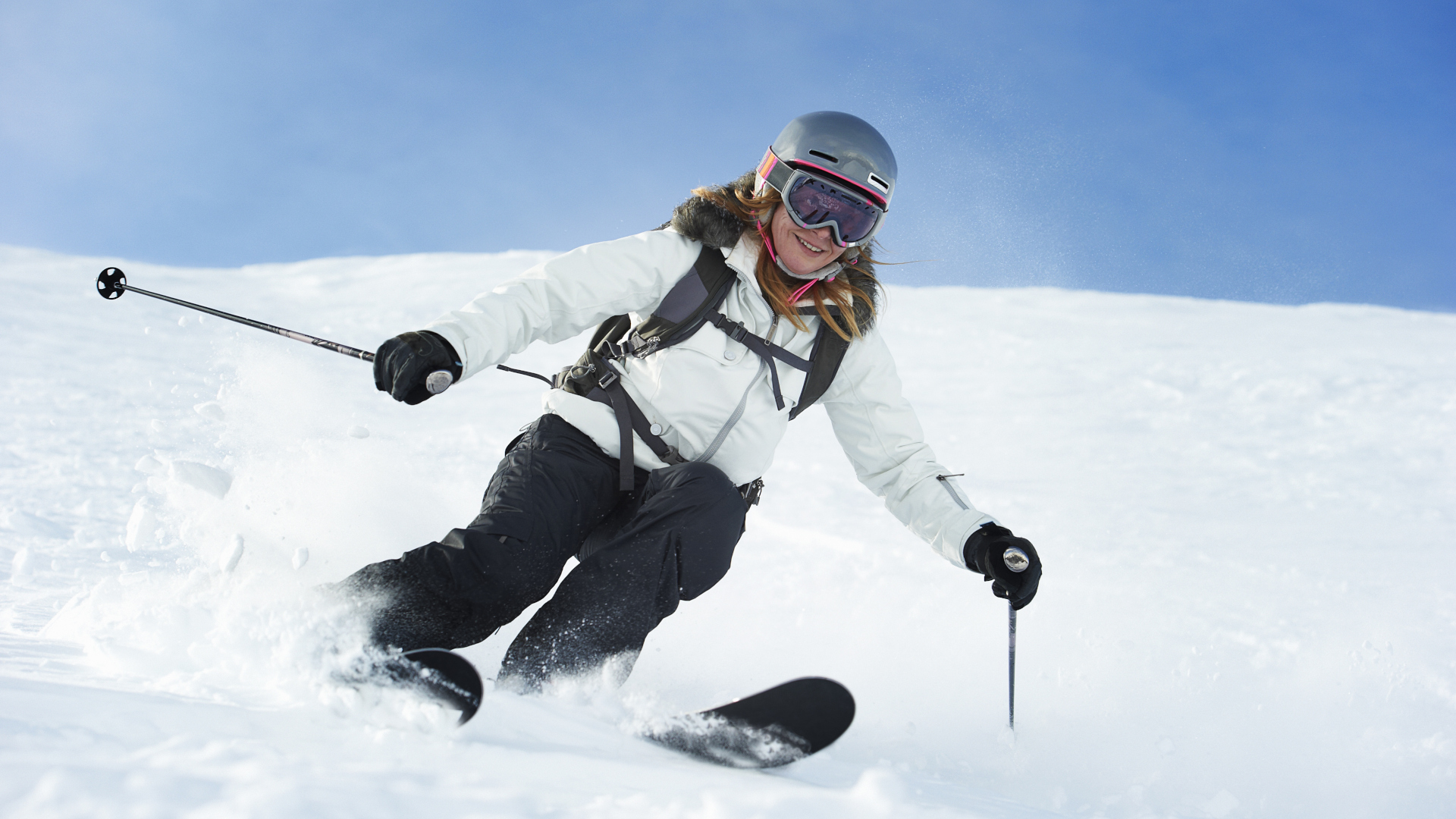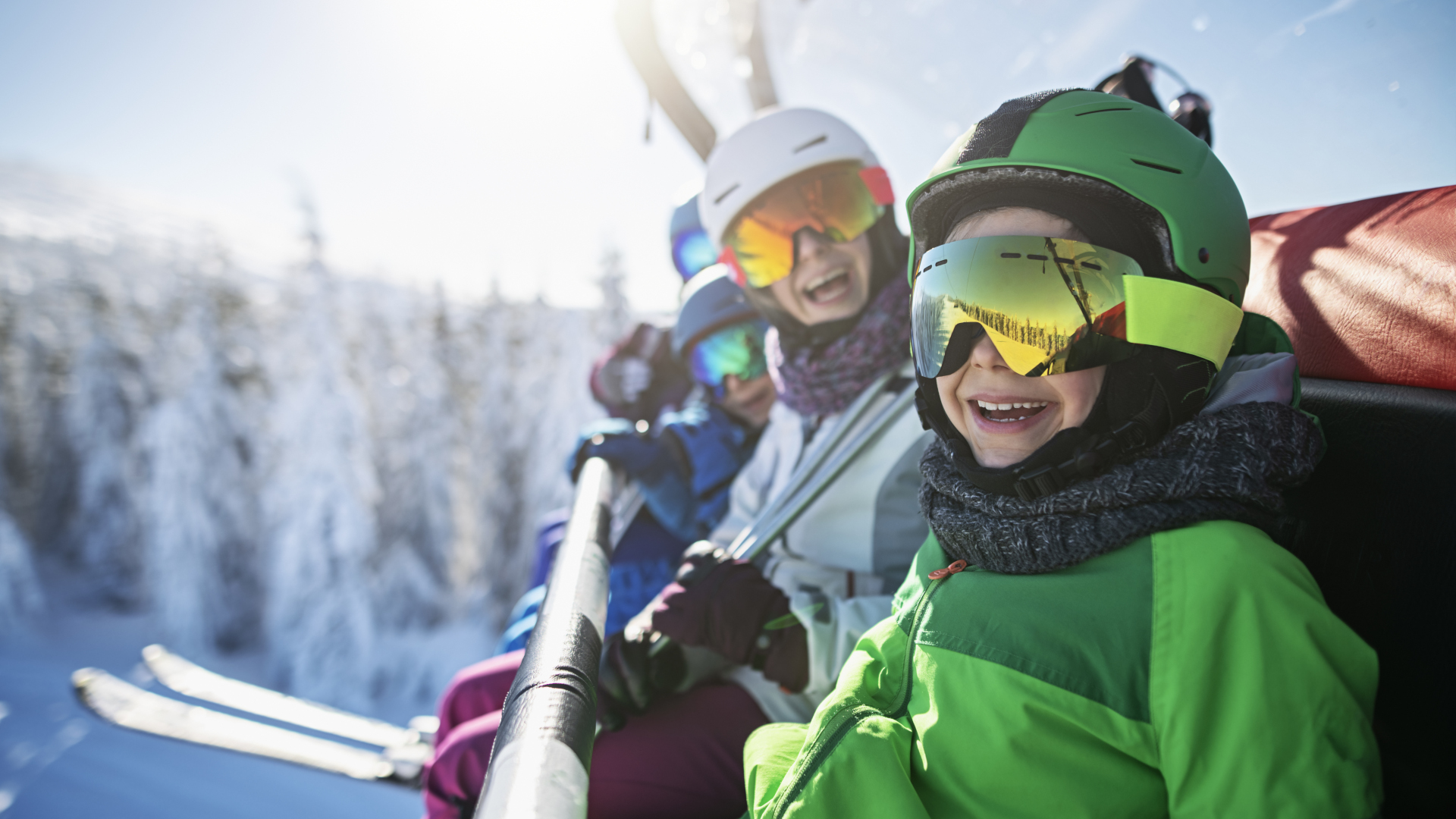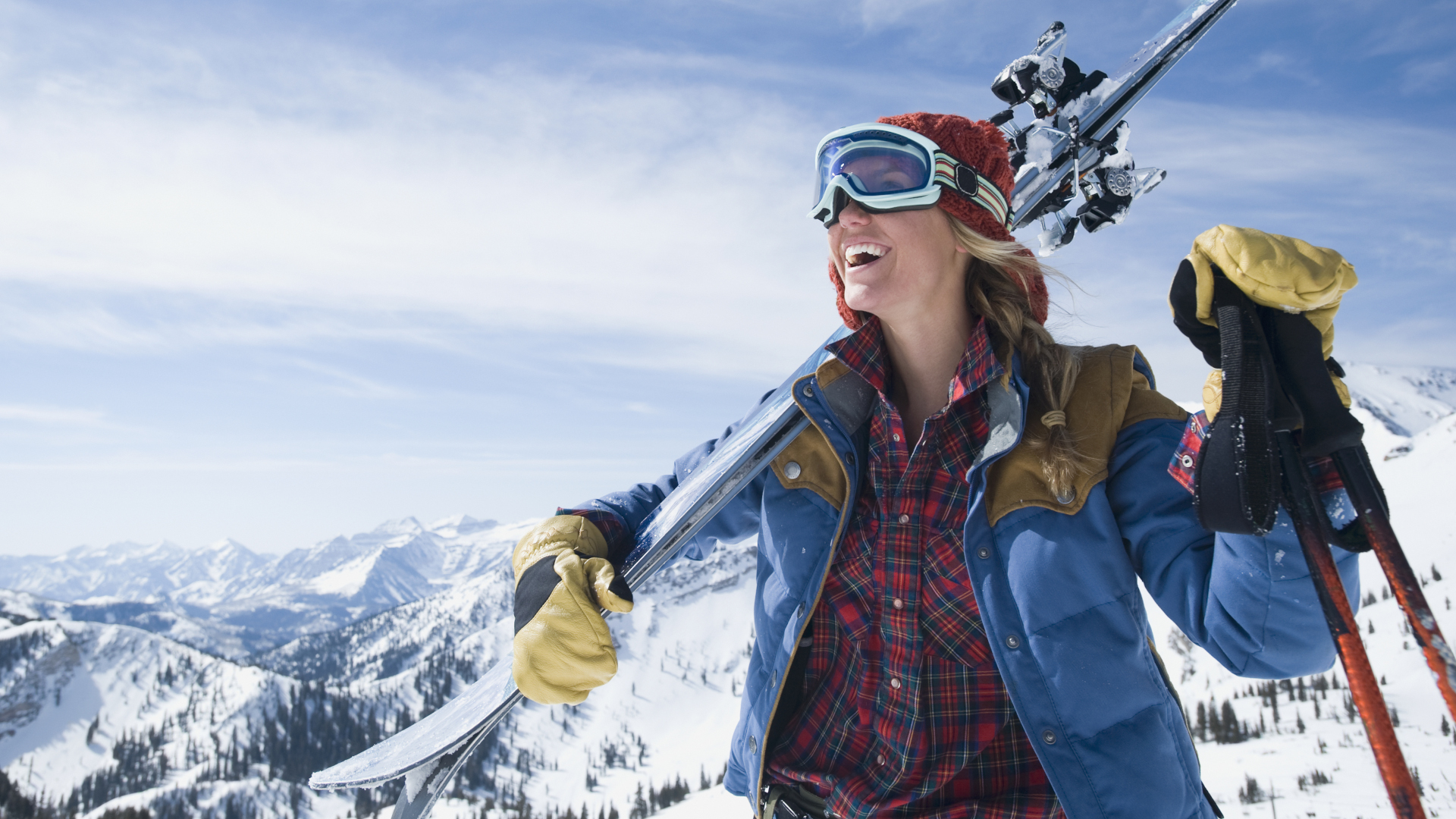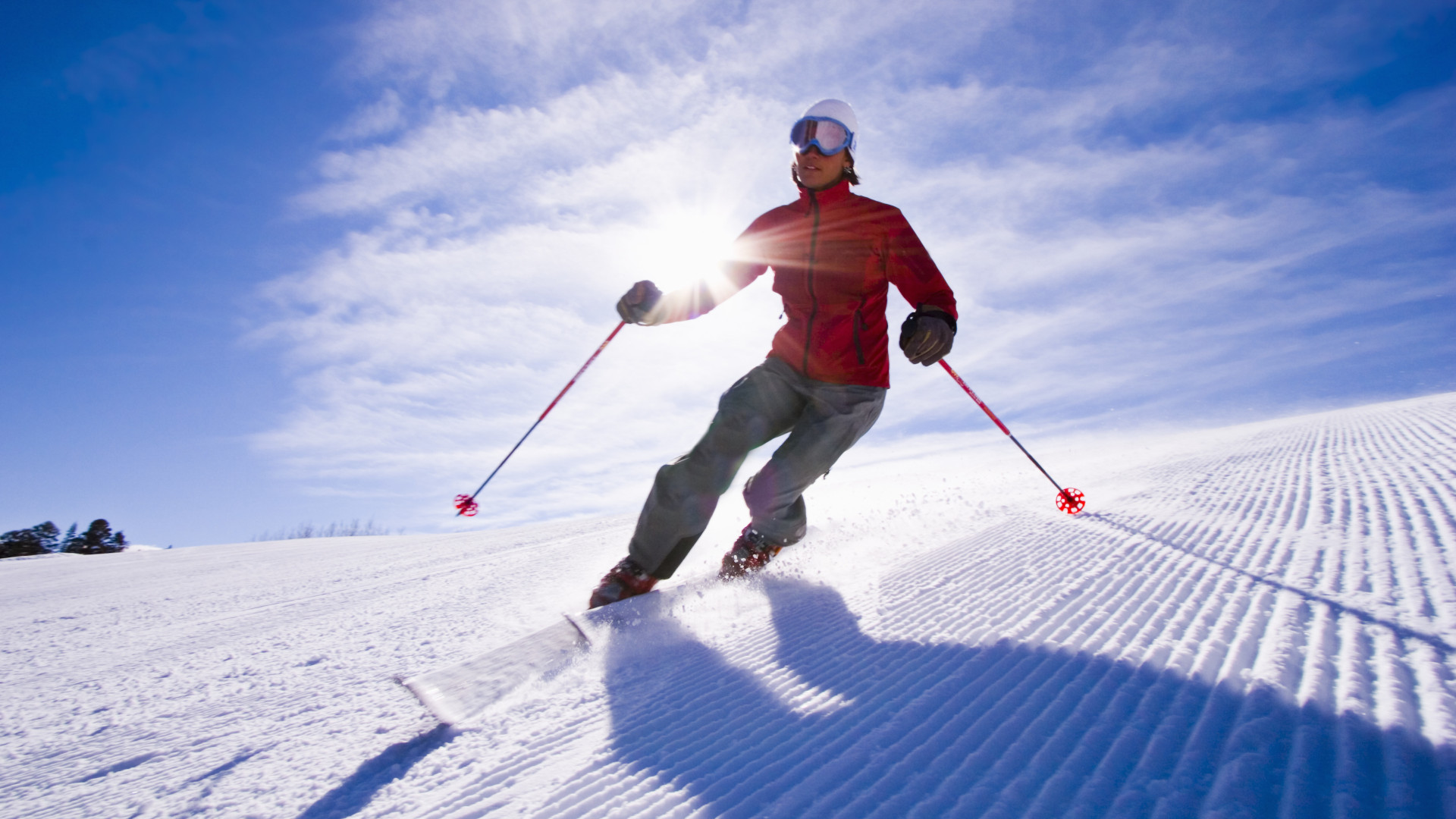Skiing safety: know the code
The risks of skiing and snowboarding might not outweigh the stoke value, but skiing safety is a vital practice to protect you and other skiers on the hill

When my boyfriend was a teenager, he tagged along on a ski trip to France with another school. His dad was a teacher there and chaperoning the kids. Jim didn’t know any of the other kids, so on the first day, he skied up to the chairlift and hopped on by himself. As he ascended the mountain, he was simultaneously exhilarated by the breathtaking alpine scenery below him and a bit nervous about his perilous situation. After all, he was basically perched on what amounted to a narrow park bench while wearing slippery ski pants, suspended high above a steep mountain, moving at the speed of a car in an urban area. When he reached the top, his smiles were met with alarm on the faces of the awaiting teachers who were horrified to discover he’d ridden the whole way up without pulling down the safety bar. Of course, safety bars on chairlifts aren’t obvious if no one has shown you what they are and how they work.

Now it’s true that on any given day on a ski resort, you’ll see folks riding the chair without the bar down, but that doesn't mean it’s a good idea. In fact, it’s insane. When you stop and think about it for a moment, the entire sport of skiing is completely insane. With no required training, you put two planks on your feet (one if you’re a snowboarder), hop on a fast-moving vehicle with nothing but a metal bar to prevent you from falling off, and away you go. When you get to the top, you hurtle at full pelt down a snow-covered mountain (ice if you’re on the east coast) along with tens of thousands of other people doing exactly the same thing. Many are skiing for the first time. Some are drunk. Nobody needs a license and besides the odd ski patroller, nobody is really out there regulating anything. How anybody makes it off the hill alive is a miracle. Skiing is absolutely ridiculous.
Skiing is also very fun, which is why we do it. But unlike other sports, there’s no referee on the sidelines to monitor your conduct and hand out red cards to people who aren’t behaving in a sportsmanlike fashion. So before you get out on the mountain, it’s important to understand the basic principles of skiing safety, and vital that you adhere to them once you arrive, so that you can enjoy yourself without putting anyone in harm’s way.

How likely is injury from skiing?
Though Jim’s story ended well, after living in Vail for 11 years I have many, many stories that didn’t. From the relatively minor incidents (a friend’s girlfriend getting run over by a snowboarder and breaking her wrist) to the catastrophic (a group of schoolkids entering a closed run and triggering an avalanche, killing one and resulting in a years-long legal dispute), skiing and snowboarding are downright dangerous. Nobody argues about that.
In the state of Colorado alone, up to 55 injured skiers and snowboarders end up in the emergency room every day of the season, according to the Colorado Sun. As we discussed in our comparison of skiing vs snowboarding, knee injuries are the most common injury amongst skiers, according to the American Journal of Sports Medicine, while snowboarders are more likely injure their wrists, shoulders, ankles and collarbones and suffer concussions. Snowboarders are more likely to get injured than skiers, but skiers are more likely to die of their injuries according to the Guardian. It’s the Wild West out there, only with much more expensive jackets.
With more people than ever before buying ski passes, and ski equipment getting more and more high tech, allowing novices to pick up the sport and bomb down the hill on day two, the risk of injury is only going to increase. Sometimes, when one skier or snowboarder hits another, resulting in bodily injury, charges are pressed and damages are paid. Often though, the guilty party simply skies away and never has to answer for their sins. If you’re going skiing, the best way to keep yourself safe is to observe skier safety guidelines, and hold your friends accountable too.

Skiing safety
Because there’s no ski police, no referee and no governing body, the onus is really on you as the skier or snowboarder to practice personal awareness and responsibility. There are certain statewide safety acts in place, but without any realistic means of enforcing them, it’s up to you practice common sense and observe the following:
Advnture Newsletter
All the latest inspiration, tips and guides to help you plan your next Advnture!
- Don’t board a chairlift or gondola when under the influence of drugs or alcohol.
- Know your skiing ability level and stay within it. Don’t ski black diamond runs if you’re a beginner. Seek lessons if you need to improve.
- Always stay in control when you’re skiing. Slow down in congested areas and be able to stop when needed and avoid other people or objects.
- Leave your headphones at home – keep your ears open so you can stay aware of your surroundings.
- People ahead of you have the right of way. You can see them, but chances are, they can’t see you. Even if you think they should be able to see you, if they’re downhill from you, they have the right of way. It is your responsibility to avoid them.
- Don’t stop any place (like below rollers) where you aren’t visible from above or where you’re obstructing a trail. Ski to the side of the trail if you need to take a break or wait for someone, or use flat areas where the resort may have set up temporary fencing.
- When starting from a stationary position, or merging onto a trail, always look uphill and yield to other skiers and snowboarders.
- Use straps and bindings when possible to secure equipment like skis, snowboards and ski poles to prevent runaway equipment.
- Don’t ski close to other skiers and snowboarders, even if you believe you are an expert skier – give them a wide berth.
- Observe all signs and stay off closed runs.
- Observe the maximum loads for the chairlift or gondola, and use the safety bar on the chairlift.
- Don’t throw anything from the chairlift. Anything.
- If you get into a collision with another person, don’t leave the area until you have given your contact details to a member of the ski patrol or another employee of the ski area.
- Best women's ski jackets: for keeping warm on the slopes
Julia Clarke is a staff writer for Advnture.com and the author of the book Restorative Yoga for Beginners. She loves to explore mountains on foot, bike, skis and belay and then recover on the the yoga mat. Julia graduated with a degree in journalism in 2004 and spent eight years working as a radio presenter in Kansas City, Vermont, Boston and New York City before discovering the joys of the Rocky Mountains. She then detoured west to Colorado and enjoyed 11 years teaching yoga in Vail before returning to her hometown of Glasgow, Scotland in 2020 to focus on family and writing.

